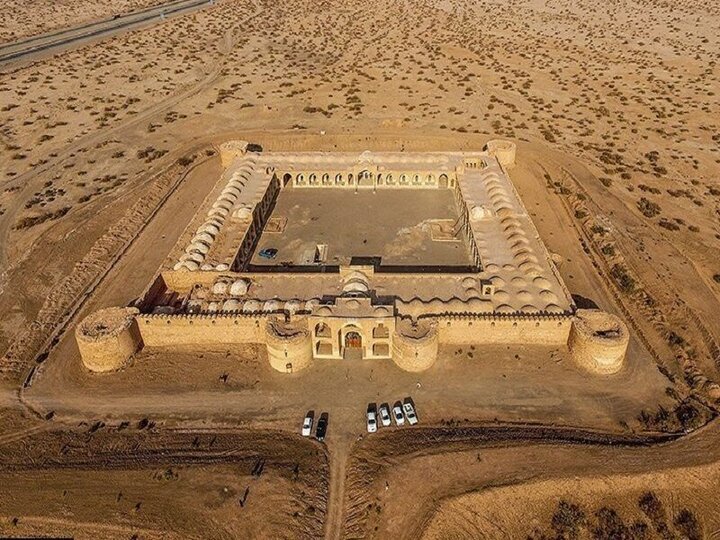Persian caravanserais: how restoration efforts can drive tourism, cultural preservation

TEHRAN - As Iran’s tourism looks to fully recover from the aftershocks of the coronavirus pandemic, a fresh push for the restoration and revival of Persian caravanserais may offer many benefits to the tourism sector.
Experts say restored caravanserais provide an authentic glimpse into Iran's rich cultural history on the other hand, and offer much-needed facilities and amenities that can make traveling in Iran more enjoyable and accessible on the other hand.
In that line, the Iranian government has launched a series of initiatives aimed at restoring these magnificent buildings to their former glory. In doing so, they hope to attract more tourists to the country and generate revenue that can be used to maintain the sites for future generations.
At the same time, efforts to preserve caravanserais also help raise funds for their maintenance and ensure that these sites will be around for future generations. Through tourism revenue, organizations can invest in ongoing upkeep and restoration efforts, helping to keep these structures standing for years to come.
On Tuesday, Ahmad Tajari, who presides over the tourism ministry’s bureau for investment and development assistance, said the revival and preparation of caravanserais as travel destinations is a unique opportunity for tourism investment.
“The restoration and revival of historical buildings will give a new life to the cities where these monuments are located.”
He made the remarks in a ceremony held to mark the recent restoration of a centuries-old caravanserai located in the Fariman country of Khorasan Razavi province, northeast Iran.
Such a scheme provides direct and indirect jobs while greatly contributing to the development of tourism, the official added.
Over the past couple of years, hundreds of Iranian historical sites and monuments have been auctioned to be temporarily ceded to the private sector, reportedly aimed at achieving higher productivity and better maintenance. This trend is observed under the close supervision of the Revitalization and Utilization Fund for Historical Places, however, there have been many opponents saying the scheme will not result in better maintenance in some cases.
Earlier this year, a selection of 54 century-old roadside inns won a UNESCO label under the name: The Persian Caravanserai. The shortlist, however, is only a small percentage of the numerous caravanserais built along the ancient roads of Iran. However, they showcase the evolution and network of caravanserais in Iran in different historical stages.
Caravanserai or caravansary is a compound word combining “caravan” with “sara”; the former stands for a group of travelers and the latter means the building. They often had massive portals supported by elevated load-bearing walls. Guest rooms were constructed around the courtyard and stables behind them, with doors in the corners of the yard.
For centuries, caravanserais constituted key parts of a rich circuit of travel and trade by providing shelter, food, and water for caravans, pilgrims, and other trekkers. For many travelers, staying in or even visiting a centuries-old caravanserai can be a wide experience; they have an opportunity to feel the past, a time travel back to a forgotten age.
Cozy chambers that are meticulously laid out around a vast courtyard may easily evoke spirits of the past. It’s not hard to fancy the hustle and bustle of merchants bargaining on prices, recounting their arduous journeys to one another while their camels chew hay! You can also conceive the idea of local architectural style and material in its heyday.
The earliest caravanserais in Iran were built during the Achaemenid era (550 - 330 BC). Centuries later, when Shah Abbas I assumed power from 1588 to 1629, he ordered the construction of a network of caravanserais across the country. Such roadside inns were once constructed along ancient caravan routes in the Muslim world to shelter people, their goods, and animals. The former Silk Road may be the most famous example dotted with caravanserais.
AFM
Leave a Comment